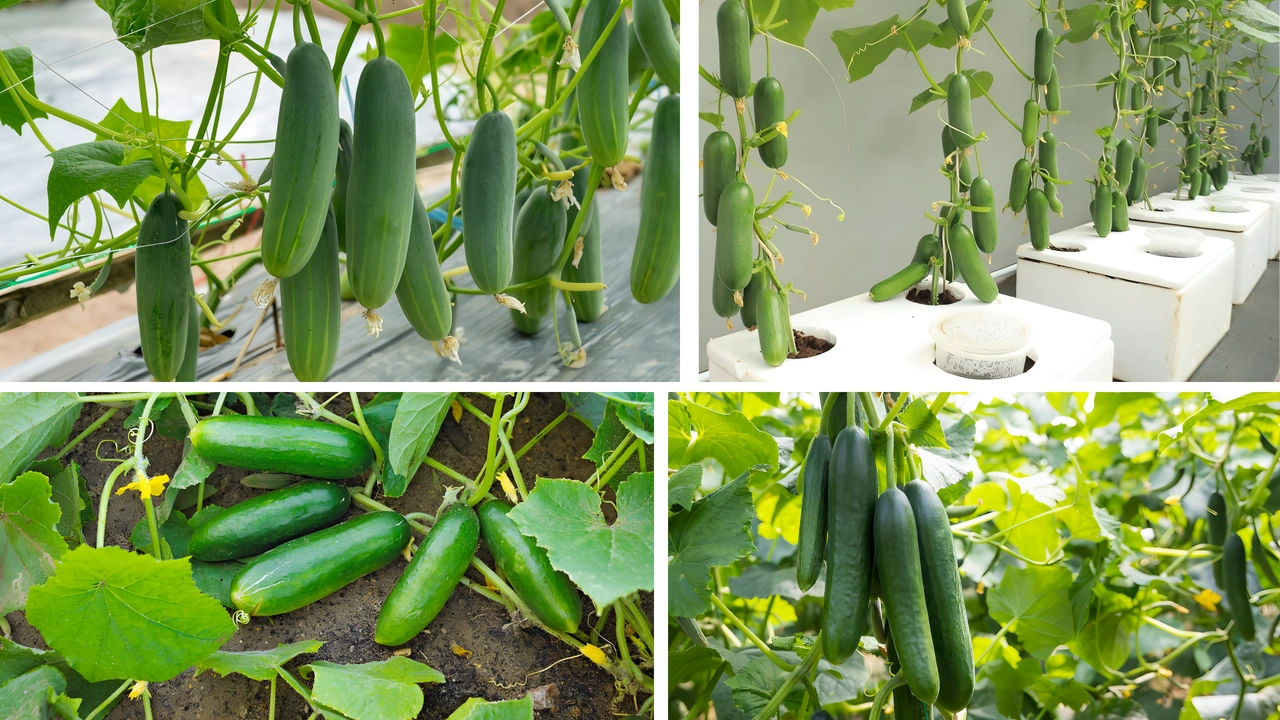Join on WhatsApp
Get the latest updates directly on WhatsApp – motivation, news & more!
Cucumbers are one of the most refreshing and versatile vegetables you can grow at home. Whether you want to enjoy them fresh in salads, pickled for storage, or juiced for hydration, cucumbers are always a healthy addition to your kitchen. Learning how to grow and care for cucumbers at home is surprisingly simple if you know the right steps. With proper soil, sunlight, watering, and pest management, even beginners can enjoy a steady supply of this green, crunchy vegetable. This guide will take you through each stage of cucumber cultivation, from preparing the soil to harvesting fresh cucumbers from your own garden.

Understanding Cucumbers Before You Grow and Care for Them
Before you begin to grow and care for cucumbers, it is important to understand their nature. Cucumbers are warm-season crops that thrive in sunny locations with well-drained soil. They are fast growers, producing fruit in just 50–70 days after planting. Cucumbers belong to the gourd family and can grow as vines or bush types, depending on the variety. Knowing the difference between slicing cucumbers and pickling cucumbers also helps beginners decide which type suits their garden best. This basic understanding ensures you start on the right path.
Preparing the Soil to Grow and Care for Cucumbers
The secret to success when you grow and care for cucumbers at home lies in soil preparation. Cucumbers require fertile, loose, and nutrient-rich soil. A slightly acidic to neutral pH of 6.0 to 7.0 is ideal. Before planting, mix compost or well-rotted manure into the soil to boost fertility and improve moisture retention. If you are planting cucumbers in pots or containers, choose a mix that drains well yet retains enough moisture for healthy growth. Raised beds also work great as they keep the soil warm and reduce waterlogging problems.
Planting Methods to Grow and Care for Cucumbers
Cucumbers can be planted either by direct sowing or by using seedlings. For beginners who want to grow and care for cucumbers, direct sowing is the easiest method. Plant seeds about 1 inch deep and 12–18 inches apart in rows. If you are growing vine varieties, provide support like a trellis or netting to save space and allow proper air circulation. For bush cucumbers, spacing can be closer. Planting at the right time—usually in spring or early summer—is crucial as cucumbers cannot tolerate frost.
Watering and Fertilizing to Grow and Care for Cucumbers
One of the most important steps when you grow and care for cucumbers is maintaining consistent watering. Cucumbers are made up of over 90% water, so they require regular moisture to stay healthy and juicy. Deep watering 2–3 times a week is better than shallow, frequent watering. Mulching around the plants helps retain soil moisture and prevents weeds. For fertilizers, cucumbers benefit from balanced nutrition. Use compost tea or a fertilizer high in potassium and phosphorus once the plants begin flowering. Avoid too much nitrogen, as it will encourage leaves instead of fruit.
Protecting Plants While You Grow and Care for Cucumbers
When you grow and care for cucumbers at home, you must be prepared to handle common pests and diseases. Aphids, cucumber beetles, and spider mites are the most common threats. Regularly inspecting leaves helps you take quick action before pests spread. Neem oil spray, insecticidal soap, or homemade garlic sprays can help keep pests under control naturally. Diseases like powdery mildew can appear if the plants don’t have good airflow, so proper spacing and vertical support are important. By keeping your plants healthy, you ensure a steady harvest.
Harvesting Tips to Grow and Care for Cucumbers
Harvesting is one of the most rewarding parts when you grow and care for cucumbers. Most cucumber varieties are ready within 50–70 days. Cucumbers should be harvested when they are firm, green, and the right size for the variety. Overripe cucumbers can taste bitter and reduce overall plant productivity. Pick cucumbers regularly to encourage the plant to produce more. Using a sharp knife or scissors instead of pulling the fruit prevents damage to the vines.
Storage Methods After You Grow and Care for Cucumbers
Once you successfully grow and care for cucumbers at home, proper storage ensures they last longer. Fresh cucumbers can be stored in the refrigerator for up to one week. If you have a large harvest, pickling is the best method to preserve them for months. Some gardeners also experiment with cucumber juice or drying thin slices for snacks. The way you store your cucumbers depends on whether you want short-term freshness or long-term preservation.
Table: Quick Guide to Grow and Care for Cucumbers at Home
| Step | Requirement | Best Practice for Beginners to Grow and Care for Cucumbers |
|---|---|---|
| Soil Preparation | Fertile, well-drained, pH 6.0–7.0 | Add compost or organic manure |
| Planting | Seeds or seedlings | Sow 1 inch deep, space 12–18 inches apart |
| Watering | Consistent moisture | Deep watering 2–3 times weekly |
| Fertilization | Balanced nutrients | Use compost tea or potassium-rich fertilizer |
| Support | Vines need trellis | Provide vertical support for airflow |
| Pest & Disease Control | Aphids, mildew | Neem spray, proper spacing |
| Harvesting | 50–70 days | Pick when firm and green |
| Storage | Short-term or long-term | Refrigerate or pickle for months |
Growing Cucumbers in Containers for Beginners
If you have limited space, you can still grow and care for cucumbers in containers. Choose pots that are at least 12–14 inches deep with good drainage holes. Use lightweight, nutrient-rich soil and provide a trellis for support. Container-grown cucumbers require more frequent watering since soil dries faster in pots. This method is ideal for urban gardeners who want fresh cucumbers without a large backyard.
Health Benefits of Growing and Caring for Cucumbers
One more reason to grow and care for cucumbers at home is their health benefits. Cucumbers are low in calories but rich in hydration, vitamins, and minerals. They are great for digestion, skin health, and weight management. Having homegrown cucumbers ensures you consume fresh, chemical-free produce, which is always healthier than store-bought ones. This adds another layer of satisfaction to your gardening journey.
Final Thoughts: Why Beginners Should Grow and Care for Cucumbers at Home
Cucumbers are among the easiest and most rewarding vegetables for beginner gardeners. By following the right steps on how to grow and care for cucumbers at home, you can enjoy a steady supply of fresh, crunchy produce throughout the season. From preparing soil and planting seeds to watering, protecting from pests, harvesting, and storing, each stage is simple enough for beginners yet rewarding enough for experienced gardeners. Growing cucumbers not only saves money but also connects you with the joy of healthy, homegrown food. For anyone looking to start a home garden, cucumbers are truly the perfect crop.


